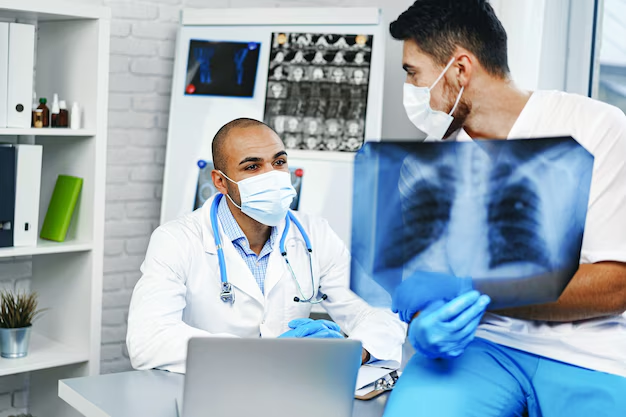How to Recognize Tuberculosis Symptoms and Take the Next Steps
Tuberculosis (TB) is a serious infectious disease that primarily affects the lungs, but it can also impact other parts of the body. Understanding whether you might have TB becomes essential not just for your personal health, but also for public safety, given its contagious nature. So how can you find out if you have tuberculosis? Let's delve into the symptoms, testing procedures, and precautions you can take to navigate this health concern effectively.
Understanding Tuberculosis: More Than Just a Cough
Tuberculosis is caused by the bacterium Mycobacterium tuberculosis. While it primarily attacks the lungs, TB can also affect the kidneys, spine, and brain. Knowing the different forms of TB and their symptoms can guide you towards appropriate testing and intervention.
The Two Stages: Latent and Active TB
Latent TB: In this stage, you carry the bacteria, but they remain inactive. You exhibit no symptoms and are not contagious. However, without treatment, there's a possibility for latent TB to transform into an active stage.
Active TB: This is the stage where symptoms manifest, and the disease becomes transmissible to others. Recognizing the symptoms early can significantly aid in controlling the spread of the disease.
Spotting the Telltale Symptoms
Discovering TB's symptoms early can help initiate timely medical consultations and testing. Common signs include:
- Persistent Cough: Lasting three weeks or more, often accompanied by blood or sputum.
- Chest Pain: Discomfort or pain with breathing or coughing.
- Weight Loss: Unexplained or drastic weight loss.
- Fatigue: Extreme tiredness or listlessness.
- Fever and Chills: Particularly in the evenings, often with night sweats.
- Loss of Appetite: Reduced desire to eat, leading to visible weight changes.
These symptoms can overlap with other respiratory issues, so it's crucial to proceed with medical evaluations to identify the exact cause.
Testing for Tuberculosis: What to Expect
Once you notice symptoms or suspect exposure, several tests can ascertain if you're carrying the TB bacteria. Here's a breakdown of common tests:
1. Tuberculin Skin Test (TST)
- Procedure: A small amount of tuberculin is injected under the skin of your forearm.
- Result Interpretation: After 48 to 72 hours, a healthcare provider checks the reaction, measuring the swelling to determine your exposure to TB bacteria.
- Limitations: Cannot differentiate between latent and active TB.
2. Blood Tests
- IGRAs (Interferon Gamma Release Assays): Measures your immune response to TB bacteria.
- Benefits: More accurate than the skin test, especially if you've had a BCG vaccine for TB.
- Usage: Helpful in diagnosing latent TB and avoiding false positives from previous vaccinations.
3. Chest X-rays
- Purpose: If TB is suspected or if a skin/blood test is positive, a chest X-ray can identify active TB, assessing lung condition and presence of abnormalities.
4. Sputum Tests
- Detail: Involves examining mucus from your lungs.
- Process: Samples are analyzed in a lab for TB bacteria, providing insights into drug resistance.
When to Seek Medical Care
If you're experiencing symptoms or believe you've been exposed, it's imperative to connect with healthcare providers without delay. Here's when to seek help:
- Persistent Symptoms: Lasting more than two weeks.
- Potential Exposure: If you've been in contact with someone who has TB or if you've traveled to areas with high TB prevalence.
- Positive Test Result: Immediate consultation for further evaluation.
Preventive Measures to Reduce Risk
Understanding prevention can enhance community health and protect you and your loved ones. Here are essential preventive strategies:
Vaccination: The BCG vaccine offers protection, especially in countries with high TB rates. It's primarily for children but can provide a layer of defense.
Regular Screening: Especially important if you work in healthcare settings or travel to high-risk regions.
Maintain Healthy Habits: Adequate nutrition, sleep, and reducing stress bolster the immune system, decreasing risk.
Hygiene Practices: Covering your mouth when coughing, and avoiding close contact with known TB patients, prevents spread.
Living with TB: Important Considerations
Once diagnosed, following medical advice and completing treatment is critical. Here's what life with TB might involve:
Medication and Treatment
Drug Regimens: Multiple antibiotics are used to counteract the TB bacteria. Completing the full course (extending from 6 months to a year) prevents antibiotic resistance.
Side Effects: Possible reactions to medications like nausea, fatigue, or jaundice, should be reported to healthcare providers.
Lifestyle Adjustments
Isolation: Depending on the infection severity, isolation may be needed initially to prevent contagion.
Support Systems: Emotional and mental health support from friends, family, and support groups can be immensely beneficial.
Importance of Follow-up Evaluations
Regular doctor visits to monitor your progress and check for side effects or complications ensure effective recovery and reduce relapse chances.
Community and Global Efforts
Addressing TB isn't solely an individual responsibility; it's a global one. Awareness and education about TB can curb its spread. Countries and organizations are working collectively to:
- Enhance Vaccination Accessibility: Efforts continue to broaden vaccination coverages globally.
- Promote Public Education: Campaigns highlight TB awareness and encourage testing.
Key Takeaways for Handling Tuberculosis Concerns
To effectively navigate the uncertainty around tuberculosis, being informed and proactive is your best strategy. Recognize symptoms, get tested, and seek medical advice promptly. While TB can pose challenges, proper attention and a community-focused approach can make a significant difference.
Summary: Your TB Health Checklist 🗒️
- 🩺 Recognize: Persistent cough, chest pain, weight loss.
- 🔍 Test: Skin tests, blood tests, chest X-rays for accurate diagnosis.
- 📅 Act: Seek medical help for symptoms or exposure and follow treatment rigorously.
- 🌎 Prevent: Vaccination and regular screenings in high-risk areas.
- 💪 Strengthen: Maintain a healthy lifestyle to support your overall well-being.
By following these guidelines, you equip yourself with the knowledge and readiness to handle tuberculosis effectively, safeguarding both personal and community health.
